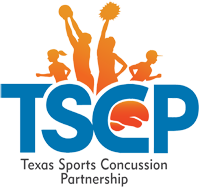With over 3 million concussions occurring each year from sports such as football, ice hockey, soccer, and lacrosse, the role of the team physician starts even before the concussion happens. This includes:
- formulating emergency medical plans and guidelines/protocols for the management of concussions.
- conducting baseline neurocognitive assessment of high-risk athletes.
- developing standardized tools for the initial assessment of an athlete with a concussion and how to follow the progress of that athlete.
- educating athletes, parents, and coaches regarding the significance of concussion, and work with administrators to implement concussion prevention programs, policy, and even legislation for the safety of the athlete.
Supporting Safety and Preserving Long-Term Cognitive Function
The team physician’s expertise is usually necessary immediately when the concussion happens. One key role is also helping determine when the athlete is allowed to go back to competition.
Concussions happen with traumatic impact to the head and neck area, and the diagnosis is made with a thorough history and physical examination. There is no reliable diagnostic imaging test or scan to make the diagnosis of a concussion other than the physician’s clinical examination.
For this reason, the diagnosis of a concussion is made immediately at the time of injury, often when the competition may still be going on around the injured athlete. In this situation, the safety of the athlete must take overall priority, and the injured athlete must be removed from the field of play or the competition halted around the injured athlete.
Current guidelines mandate that once the diagnosis of concussion is made during a competition, the athlete will not be allowed to return back to that competition.
Determining the Severity of a Brain Injury
Although concussions are a serious injury, it is not the most serious injury that a team physician is concerned about when an immediate blow to the head and neck occurs. More catastrophic injuries, such as subdural and epidural hematomas (brain bleeding) and spinal cord injuries of the neck can occur. For some athletes, the team physician has to rule out these types of injuries first. Once the catastrophic injury has been ruled out and the diagnosis of concussion is made, the team physician role is now to communicate with family, friends, and coaches about what they can expect with regard to the injured athlete. Because athletes with a concussion can result in significant cognitive impairment, the physician must talk directly to those who will be observing the athlete for the next few hours, days, and weeks to impart on them what they should expect, signs and symptoms to be worried about, and follow up clinic visits with the physician.
Determining When an Athlete Can Return to Play
The most difficult job of the team physician is determining if or when to allow the athlete with a concussion to return back to competition. There are a few definitive guidelines:
- Any athlete suffering a concussion during a practice or competition should not be allowed to go back to that same practice or competition.
- Most team physicians feel that if an athlete is still having cognitive impairment problems, even after a period of rest, they should not be allowed to compete.
- Most team physicians follow protocols based a best available research that gradually implements the athletes who have recovered from a concussion back into practice and competition; most of these protocols are over a 5-10 day time frame.
Better research over the next few years will hopefully help us with these decisions and guide us into making safe and effective recommendations to our athletes with concussions.

Leave a Reply